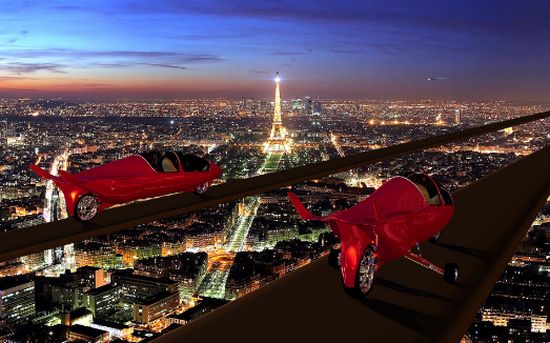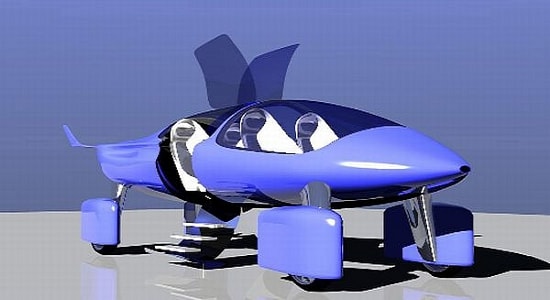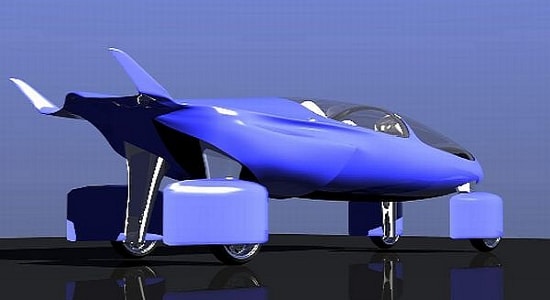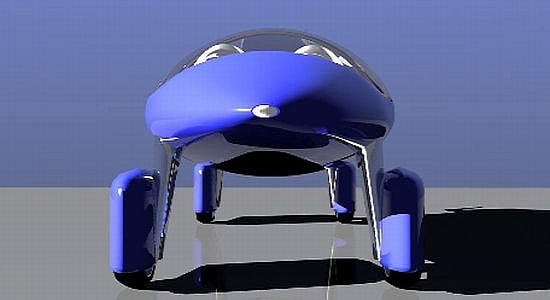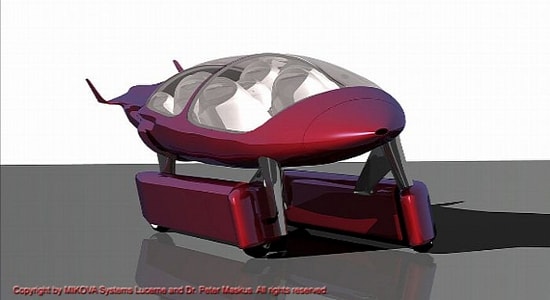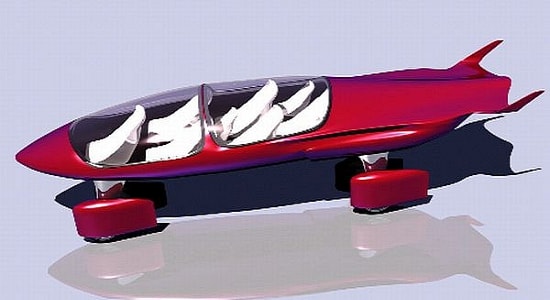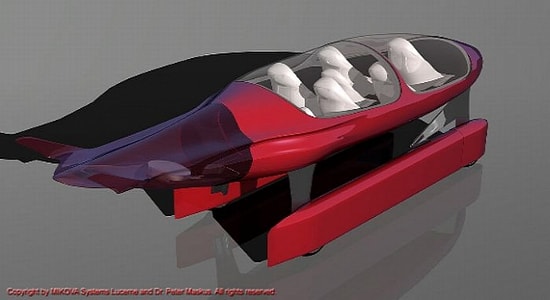For decades, humanity has been busy trying to envision how the future would look like. Regardless of the field of human existence where the predictions are made, people making them have a tendency to remain trapped in conventional thinking.
This applies to visions of the future in transportation, as well. Movies, books and drawing depicting the future of transportation have embedded into the collective mind a future of autonomous vehicles, flying or driving on either air corridors or usual roads, just like they do today: at relatively slow speeds, with traffic jams all around.
But what if those predictions were wrong? What if the future looks nothing like that, but completely different? A future dependent on suspended tracks, but with no actual speed limits to trap the vehicles of tomorrow in endless jams. An Acabion future.
WHAT IS ACABION
Acabion is a German company that plans to change the way in which transportation, individual or otherwise, will look in the distant future. But that's not important. What's important is why the company plans to change the future, and how.
Starting from the premises that today's road network and the vehicles on it are fundamentally flawed and ineffective, Acabion decided it’s time for somebody to envision a future where speed and traffic jams will no longer be an issue.
Using specially designed vehicles, running of specially designed, elevated or vacuumed tracks, like you'll see below, the company has a proposition to make: how would you feel traveling at speeds of
600 km/h (372 mph)? Or even 20,000 km/h (12,427 mph)?
To be built, at first, as extensions to the current roads, the elevated tracks would allow, in theory, the creation of the required infrastructure for the vehicles to achieve the impressive speeds we mentioned earlier. Working as fully automated roads, the tracks would be used in stages.
During the first stage, which may become reality by 2015, the tracks will be built to cover short distances. Starting and ending at junctions with regular roads, the tracks would allow at first speeds of about 300 km/h (186 mph).
By the middle of the century, the tracks would be constructed to cover short-, mid-, and long distance travel as well. Using the Acabion track, a person should be able to travel from Los Angeles to Memphis in four hours, or from Bangalore to New Delhi in three hours. This is the second stage of the Acabion dream, which should manifest itself in 2050.
At about the same time, the tracks should become fully automated and powered by the sun alone. Power plants located along the tracks will not only generate electricity and use it for the regular operation of the track, but also provide it to the crafts traveling on those tracks. Because, by 2050, Acabion plans to ditch all engines and motors in its vehicles and use a maglev-like system to propel the vehicles forward.
By 2100, transportation as we know it will completely change. The tracks and roads, still in operation at a local level, would be accompanied by vacuum tubes to cover long and intercontinental distances. These 3 meters in diameter tubes would allow the craft traveling inside them to achieve speeds of up to 20,000 km/h (12,427 mph). The craft would be powered in the tunnel by the same maglev-like elements used on the suspended tracks, propelling crafts forward, one at a time.
Acabion has already created a few vehicles which are intended to populate the elevated tracks of tomorrow. Launched in three series, the MK and GT series and the da Vinci models, the so-called Road Streamliners are electric crafts, powered by motors which can deliver a power of about 600 kW, or the equivalent of 804 hp. And keep in mind that this entire troop is intended to propel a vehicle which is not much bigger than a motorcycle (in fact, a little math shows that the motors provide no less than 2,500 hp/tons in these Streamliners).
The crafts, says Acabion, have been designed to offer a top speed of about 420 km/h (248 mph) on standard highways and up to 600 km/h (372 mph) on the purpose built tracks. The speeds will be achieved not only because of the power units, but also because of the design of the crafts. Acabion says that it is using design elements from jet fighters, super bikes and space flight materials.
Just to give you an example on how the new vehicles will be built, it's enough to tell you that Acabion's latest contraption, the GTBO, uses the engine from a Suzuki Hayabusa, can speed to up to 547 km/h (340 mph) and, even if it’s not electric, as the ones from the future will likely be, it achieves remarkable fuel consumption figures: 100 mpg (2.35 l/100km) at 100 mph (161 km/h).
Acabion is, of course, aware that the transportation technology it proposes does come with a few glitches, the biggest one being the price. Acabion plans to sell the MK for $400,000, while the da Vinci models, of which only three units will be built, will cost much more than any supercar ever created by man: $6.5 million. The GTBO has a starting price of $2.5 million.
Starting from the premises that today's road network and the vehicles on it are fundamentally flawed and ineffective, Acabion decided it’s time for somebody to envision a future where speed and traffic jams will no longer be an issue.
Using specially designed vehicles, running of specially designed, elevated or vacuumed tracks, like you'll see below, the company has a proposition to make: how would you feel traveling at speeds of
600 km/h (372 mph)? Or even 20,000 km/h (12,427 mph)?
THE ACABION TRACK
For the vision of a vehicle going 20,000 km/h to become a reality, some conditions must at first be met and some new technologies invented. And the most important of these technologies are the Acabion tracks.To be built, at first, as extensions to the current roads, the elevated tracks would allow, in theory, the creation of the required infrastructure for the vehicles to achieve the impressive speeds we mentioned earlier. Working as fully automated roads, the tracks would be used in stages.
During the first stage, which may become reality by 2015, the tracks will be built to cover short distances. Starting and ending at junctions with regular roads, the tracks would allow at first speeds of about 300 km/h (186 mph).
By the middle of the century, the tracks would be constructed to cover short-, mid-, and long distance travel as well. Using the Acabion track, a person should be able to travel from Los Angeles to Memphis in four hours, or from Bangalore to New Delhi in three hours. This is the second stage of the Acabion dream, which should manifest itself in 2050.
At about the same time, the tracks should become fully automated and powered by the sun alone. Power plants located along the tracks will not only generate electricity and use it for the regular operation of the track, but also provide it to the crafts traveling on those tracks. Because, by 2050, Acabion plans to ditch all engines and motors in its vehicles and use a maglev-like system to propel the vehicles forward.
By 2100, transportation as we know it will completely change. The tracks and roads, still in operation at a local level, would be accompanied by vacuum tubes to cover long and intercontinental distances. These 3 meters in diameter tubes would allow the craft traveling inside them to achieve speeds of up to 20,000 km/h (12,427 mph). The craft would be powered in the tunnel by the same maglev-like elements used on the suspended tracks, propelling crafts forward, one at a time.
ROAD STREAMLINERS
The Acabion vehicles are, for now, intended just as crafts for individual transport. That means that, in general, they have been created as personal transportation vehicles, to be used just like today's cars. However, mass transportation using the same principles is not that farfetched.Acabion has already created a few vehicles which are intended to populate the elevated tracks of tomorrow. Launched in three series, the MK and GT series and the da Vinci models, the so-called Road Streamliners are electric crafts, powered by motors which can deliver a power of about 600 kW, or the equivalent of 804 hp. And keep in mind that this entire troop is intended to propel a vehicle which is not much bigger than a motorcycle (in fact, a little math shows that the motors provide no less than 2,500 hp/tons in these Streamliners).
The crafts, says Acabion, have been designed to offer a top speed of about 420 km/h (248 mph) on standard highways and up to 600 km/h (372 mph) on the purpose built tracks. The speeds will be achieved not only because of the power units, but also because of the design of the crafts. Acabion says that it is using design elements from jet fighters, super bikes and space flight materials.
Just to give you an example on how the new vehicles will be built, it's enough to tell you that Acabion's latest contraption, the GTBO, uses the engine from a Suzuki Hayabusa, can speed to up to 547 km/h (340 mph) and, even if it’s not electric, as the ones from the future will likely be, it achieves remarkable fuel consumption figures: 100 mpg (2.35 l/100km) at 100 mph (161 km/h).
Acabion is, of course, aware that the transportation technology it proposes does come with a few glitches, the biggest one being the price. Acabion plans to sell the MK for $400,000, while the da Vinci models, of which only three units will be built, will cost much more than any supercar ever created by man: $6.5 million. The GTBO has a starting price of $2.5 million.
